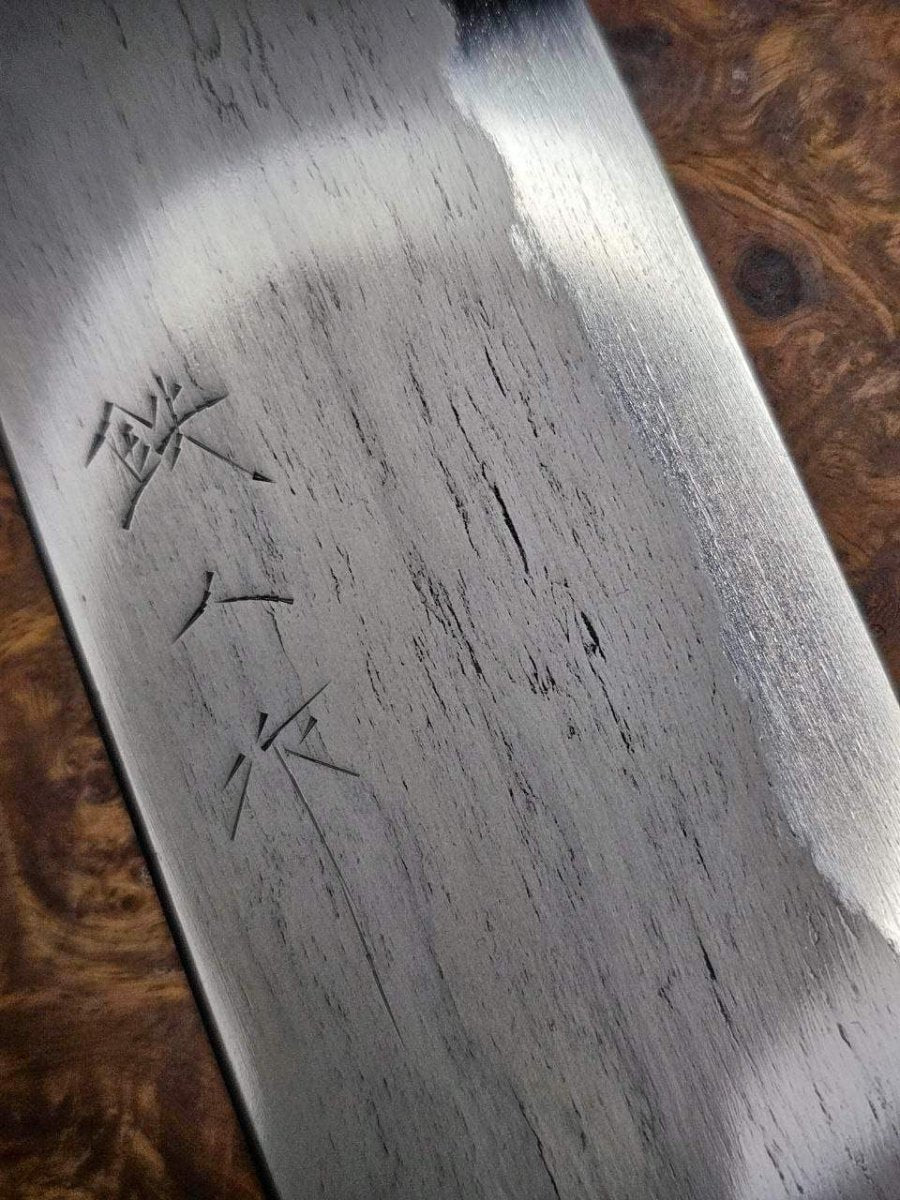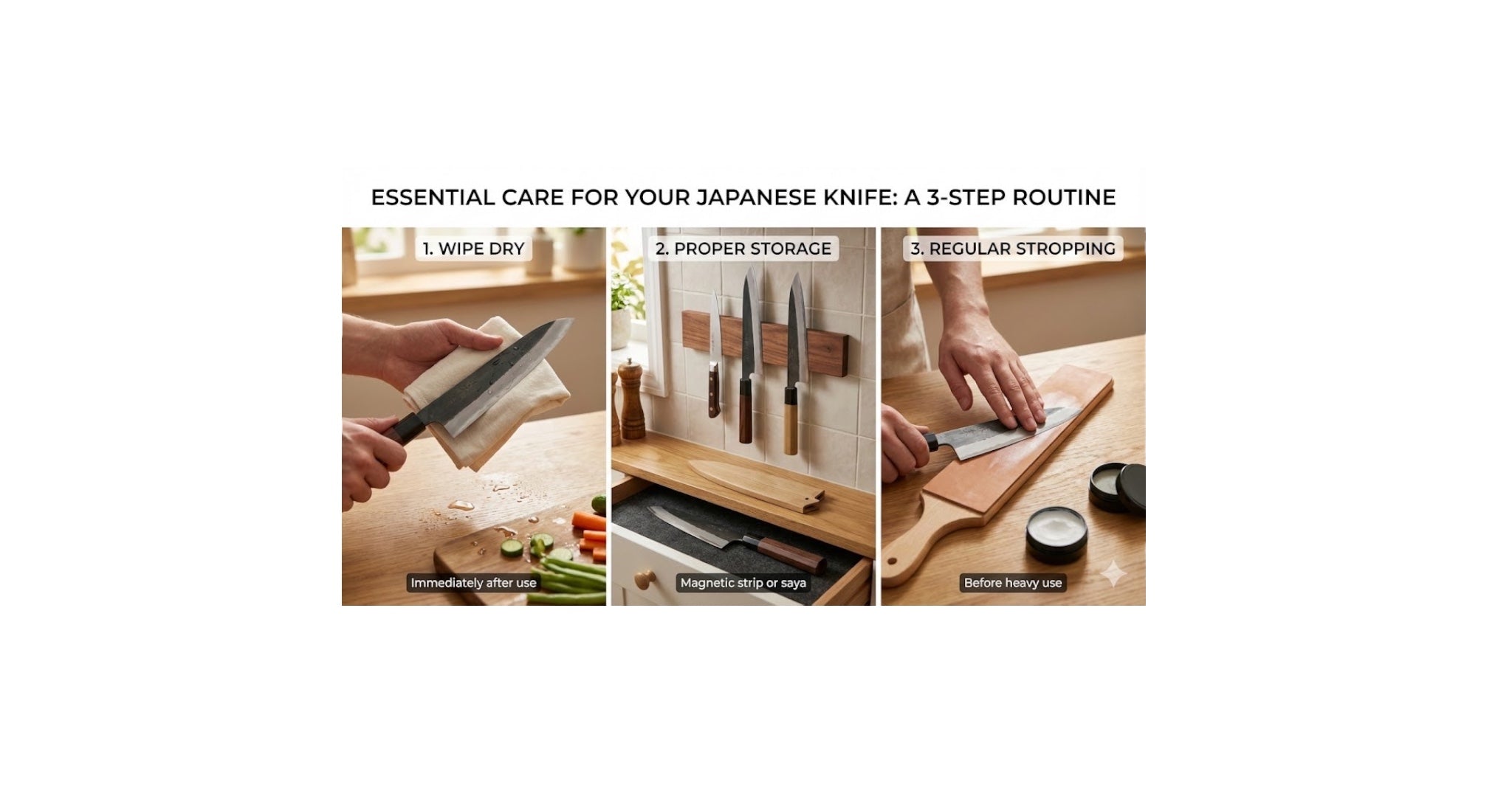Moritaka Knives — Over 700 Years of Sword‑Forging Brilliance Turned Kitchen Art
Moritaka Hamono is Japan’s longest‑running family blade forge, founded in 1293 by swordsmith Kongōhyōe Minamoto‑no‑Moritaka (金剛兵衛源盛高). For the first 13 generations they forged swords for Buddhist priests on Mt Hōman, Dazaifu, Fukuoka. In 1632, the family followed the Higo daimyō Hosokawa clan south to Yatsushiro, Kumamoto, where they still operate today.
Now led by the 27th generation CEO, Moritaka Tsunehiro (盛高 経博), with daughters Kyoko (domestic sales) and Akiko (international sales) managing day‑to‑day operations, Moritaka Hamono crafts hand‑forged kitchen knives that fuse sword‑era techniques with modern culinary performance.
700 Years, Two Homes, One Unbroken Lineage
1293 ‑ 1631 | Dazaifu, Fukuoka
The first 13 generations served as official swordsmiths for Mt Hōman’s Buddhist community, forging tachi and temple blades that blended spiritual symbolism and battlefield reliability.
1632 ‑ Today | Yatsushiro, Kumamoto
When the Hosokawa clan transferred to Higo Province, the Moritakas moved to Miyaji‑machi (now Yatsushiro) to supply swords for the new domain. During the Meiji Restoration, sword demand collapsed; the family pivoted to farm tools and, by the early 20th c., kitchen knives—preserving samurai metallurgy in a chef’s‑knife form.
Metallurgy Mastery: Aogami Super at ~65 HRC
Moritaka’s flagship core steel is Aogami Super (BLUE Super). The steel’s tungsten & vanadium carbides deliver elite edge retention, but they turn brittle if over‑heated. Moritaka’s answer: a proprietary low‑temperature clad process—wrapping the core in soft iron below the threshold where tungsten destabilises—achieving a sweet‑spot hardness of ~65 HRC without chipping.
- Self‑laminated (jika‑tansetsu): very few smiths in Japan weld their own Aogami Super sandwiches in‑house.
- Wari‑komi geometry: a hard core steel supported by tough iron cheeks—think graphite in cedar.
- Kurouchi finish: the natural forge scale stays on, giving rustic beauty and mild corrosion buffer.
Blade Geometry Philosophy
| Blade Length | Grind Intent | Practical Note |
|---|---|---|
| ≤ 210 mm | Thin out of box | No thinning required; ideal daily driver. |
| ≥ 240 mm | Stouter spine for core support | Optional thinning for those who prefer glide; not structurally necessary. |
This grind scheme keeps the brittle AS core safe in long blades yet whisper‑thin in shorter gyuto & santoku sizes—insight gleaned from 700 years of balancing sharpness and durability.
Performance, Culture & Community
- Edge life: weeks of service; a monthly strop revives hair‑popping bite (field‑tested in our own prep kitchen).
- Straightness: unusually true for hand‑forged blades—each blank is eye‑sighted & tap‑straightened.
- Local pride: Moritaka demonstrates forging at Yatsushiro’s annual Myōken Festival, selling knives beside festival floats.
Flagship Pick: Moritaka AS Gyuto 210 mm
| Core / HRC | Aogami Super · ~65 HRC |
|---|---|
| Edge ⟂ Heel | 212 mm × 46 mm · ~3.3 mm spine |
| Weight | ~198 g (octagonal walnut handle) |
Sweet‑spot length for home or pro stations; glides through carrots yet retains punch for protein trimming.
Kurouchi & Carbon Steel Care 101
- Hand‑wash & towel‑dry immediately.
- Avoid extended contact with citrus / vinegar; acids fade kurouchi.
- Store on wood block, saya, or mag‑strip—never loose in a drawer.
- Welcome the patina; it’s your knife’s living armour.
- Strop lightly; whetstone touch‑up when bite dulls (4‑8 weeks typical).
Why Buy Moritaka from Tokushu Knife
- Direct Partnership: we were Moritaka’s first North‑American dealer and still visit the forge annually.
- Strict QC: every arrival is sight‑checked for straightness & grind uniformity.
- Exclusive Handles & Customs: occasional walnut/buffalo or colour‑stabilised options you won’t find elsewhere.
- Lifelong Support: free stropping advice, paid pro sharpening, warranty assistance.
🔪 Explore the Full Moritaka Collection
Own a Living Piece of Japanese Blade History
From guarding monks to gliding through mise‑en‑place, Moritaka knives channel seven centuries of sword‑smithing into every slice. Add one to your kit and carry on a craft that predates the first shogunate—refined now for the rhythm of the modern kitchen.




Leave a comment
This site is protected by hCaptcha and the hCaptcha Privacy Policy and Terms of Service apply.